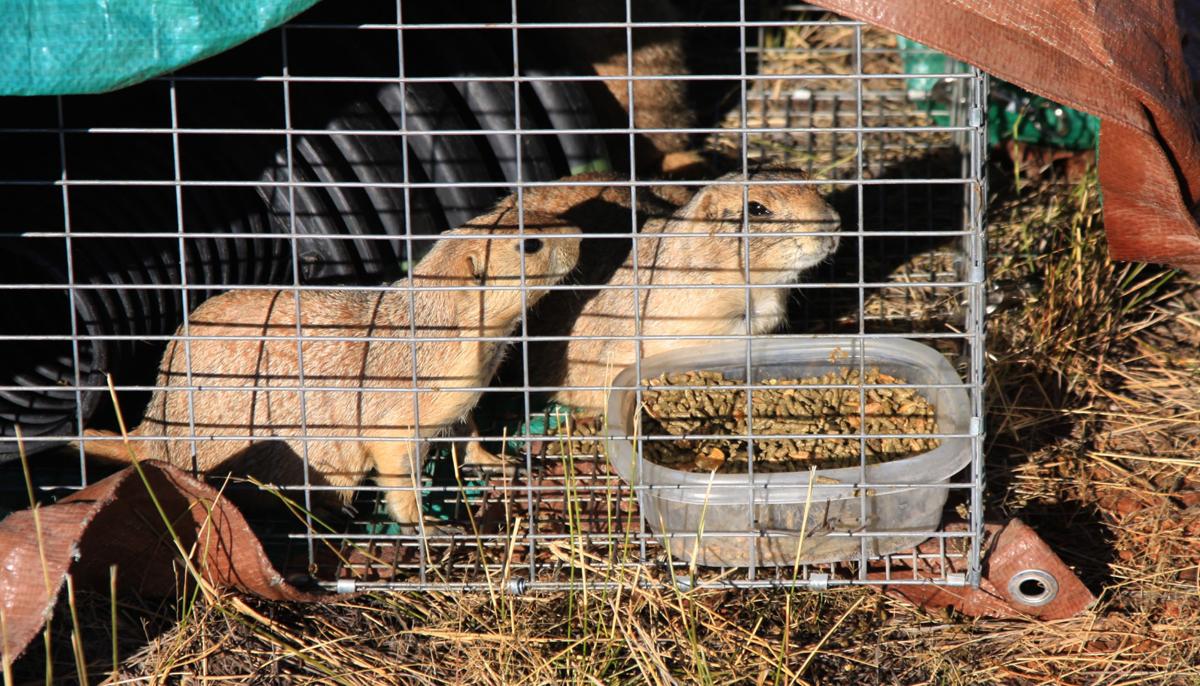The Arizona Game and Fish Department released 94 black-tailed prairie dogs on Pima County’s Sands Ranch near Sonoita on Friday, according to Mark A. Hart, a public information officer with Arizona Game and Fish.
As a result, they are getting new digs in the form of artificial burrows.
Their new homes are on a 40-acre site complete with 25 artificial burrows installed earlier by Game and Fish, Pima County and the county’s Arizona Conservation Corps youth crew, Hart said.
The burrows are created by burying a 3-foot by 1-foot “bottomless” den about 6-feet deep. They are provided access to the surface by way of plastic tubing that leads to a protective cage that helps reduce the risk from predators.
This allows them to get accustomed to their new habitat and venture safely outside the burrow. They will be provided food and water for the first two weeks until they can get acclimated, Hart said.
The initial phase of the reintroduction is expected to take months and the prairie dogs are going to be monitored by volunteers, he said.
The prairie dogs, which came from New Mexico, are the first to be transplanted outside of the Las Cienegas National Conservation Area southeast of Tucson, according to Hart.
Native prairie dogs were last documented in the state in the 1960s and had to be reintroduced to the area starting in 2008.
Their digging and burrowing activities increase the flow of rainwater into the ground water table and also loosens the soil. But they also provide habitat for many types of birds such as mountain plovers and burrowing owls.
Prairies dogs enhance the productivity of grasses and flowers, making foraging possible for pronghorn and domestic livestock.
Starting in 2010, the county partnered with Game and Fish to secure a $360,000 grant from the National Fish and Wildlife Foundation for the project. Pima County acquired the Sand Ranch for conservation in 2008 under the 2004 Open Space Bond program, Hart said.





